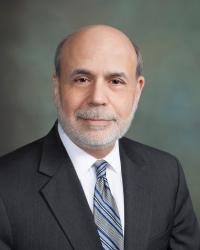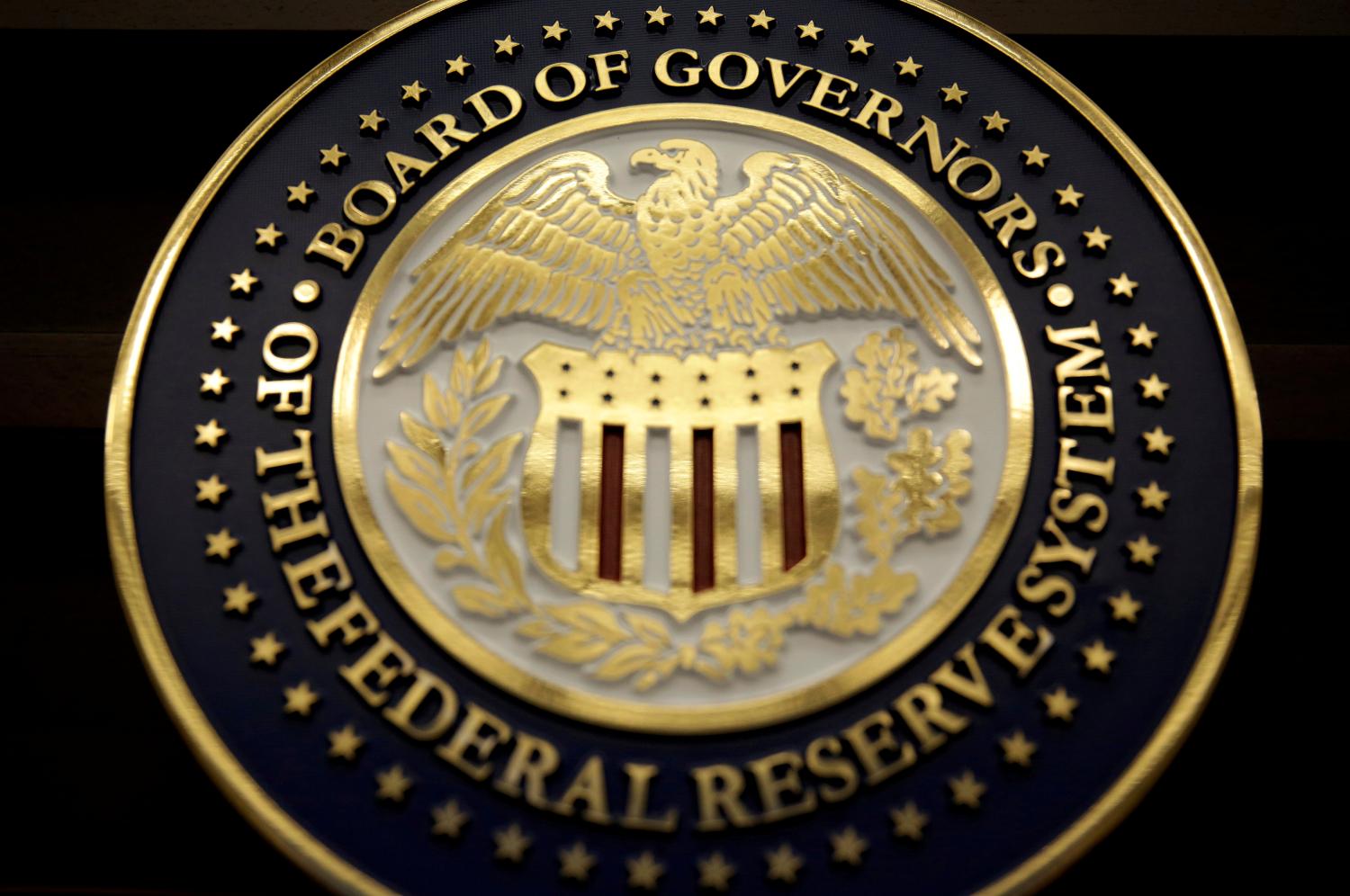Ben Bernanke presented the following framework at a conference on Rethinking Macroeconomic Policy at the Peterson Institute on October 12-13, 2017.
In 2017, the flagship research conferences of the European Central Bank and the Federal Reserve—held in Sintra, Portugal, and Jackson Hole, Wyoming, respectively—had something in common: Both had official themes unrelated to monetary policy, or even central banking. The ECB conference (theme: Investment and Growth in Advanced Economies) did include an opening speech by President Mario Draghi on monetary policy and the outlook, before turning to issues like the prospective effects of technological advances on employment. However, the Fed’s meeting (theme: Fostering a Dynamic Global Economy), which included papers on topics ranging from fiscal policy to trade to income distribution, made almost no mention of monetary policy. Whether intended or not, the signal, I think, was clear. After ten years of concerted effort first to restore financial stability, then to achieve economic recovery through dramatic monetary interventions, central bankers in Europe and the United States believe that they see the light at the end of the tunnel. They are looking forward to an era of relative financial and economic stability in which the pressing economic issues will relate to growth, globalization, and distribution—issues that are the responsibility of other policymakers and not primarily the province of central bankers.
Would that it were so simple. Although central bankers can certainly hope that the next ten years will be less dramatic and demanding than the past ten, there will certainly be important new challenges to be met. In this note, I focus selectively on two such challenges: the implications of the secular decline in nominal interest rates for the tools and framework of monetary policy; and the status of central banks within the government, in particular, the questions of whether central banks should and will retain their current independence in making monetary policy. As I will explain, the two challenges are related, in that the low-inflation, low-interest-rate environment in which we now live calls into question some of the traditional rationales for central bank independence.
The long-term decline in nominal interest rates is well known and has been extensively studied (Rachel et al., 2015). The decline appears to be the product of many causes, including lower inflation rates; aging populations in advanced economies (Gagnon et al., 2016a); slower productivity growth and “secular stagnation” (Summers, 2015); global patterns of saving and investment (Bernanke, 2005); and increased demand for “safe” assets (Del Negro et al., 2017; Caballero et al., 2017). Some of these factors may reverse in the medium term—for example, recent historically low rates of productivity growth could revert to more-normal levels (Byrne and Sichel, 2017), and there is some evidence that the global savings glut may be moderating (Chinn, 2017)—which could lead to somewhat higher rates in the future. For now, though, the combination of low nominal rates and the difficulty of reducing short-term interest rates (much) below zero implies that monetary policymakers may have limited scope to address deep economic slowdowns through the traditional means of cutting short-term interest rates. Recent research by Kiley and Roberts (2017) illustrates the potential severity of the problem. Based on simulations of econometric models, including the Fed’s main model for forecasting and policy analysis, these authors show that the use of conventional, pre-crisis policy approaches could lead to policy rates being constrained by the zero lower bound (ZLB) as much as one-third of the time, with adverse effects on the Fed’s ability to hit its 2 percent inflation target or to keep output near potential.1
How should central banks respond? Outside of making a stronger case for proactive fiscal policies, there are two broad possibilities (interrelated and not mutually exclusive). First, rather than relying on the management of short-term interest rates alone, as assumed by Kiley and Roberts, monetary policymakers could make greater use of new tools developed in recent years. In the first main section of this paper, I review some of these tools. I argue that both forward guidance and quantitative easing are potentially effective supplements to conventional rate cuts, and that concerns about adverse side effects (particularly in the case of quantitative easing) are overstated. These two tools can thus serve to ease the ZLB constraint in the future, as argued by Yellen (2016). Two other tools—negative interest rates and yield curve control—are less likely to play important roles, at least in the United States. European and Japanese policymakers have successfully employed negative rates, but overall they appear to have relatively modest benefits (because the option to hold cash limits how far negative rates can go), as well as some offsetting costs (related to their effects on certain financial institutions and markets). Yield curve control, or the direct management of longer-term interest rates, has been adopted by the Bank of Japan and makes sense in the current Japanese context. However, as I will discuss, the depth and liquidity of the markets for U.S. government securities would make it difficult for the Fed to peg rates beyond a horizon of two years or so.
Although unconventional tools can increase the potency of monetary policy, the ZLB is still likely to be a binding constraint on the monetary response to a downturn that is more serious, or which occurs when rates remain (like today) below neutral levels. A second broad response to the problem is to modify the overall policy framework, with the goal of enhancing monetary policymakers’ ability to deal with such situations (Williams, 2017). Focusing on the case of the Federal Reserve, in the second principal section of the paper I briefly consider two proposed alternatives: (1) raising the Fed’s inflation target from its current level of 2 percent, and (2) introducing a price-level target. I argue that a higher inflation target has a number of important drawbacks: It would, obviously, lead to higher average inflation (possibly inconsistent with the Fed’s mandate for price stability); and, more subtly, it implies a Fed reaction function that theoretical analyses suggest is quite far from the optimal response. A price-level target performs better on both counts, as 1) it is fully consistent with the goal of price stability, perhaps even more so than an inflation target; and 2) it implies a “lower-for-longer” response to periods when rates are at their ZLB, which approximates what theory tells us is the optimal approach. However, a price-level target can be problematic in the face of supply shocks, and the switch to a price-level target from the current inflation targeting approach would be a significant communications challenge. In the latter part of the section, I propose and discuss a third possible alternative: a “temporary price-level target” that kicks in only during periods in which rates are constrained by the ZLB. I argue that the adoption of a temporary price-level target would be likely to improve economic performance, relative to the current framework. Importantly, it would do that while both maintaining price stability and requiring only a relatively modest shift in the Fed’s framework and communication policies. However, this proposal is a tentative one at this stage, and more analysis would be needed before taking it further.
Beyond the problems arising from low nominal interest rates, monetary policymakers also face challenges to central bank independence (CBI). The challenge to CBI has been heightened by the political blowback that followed the financial crisis. But, as already noted, questions about CBI are also related to the change in the macroeconomic and interest-rate environment, linking this issue to the themes of the first part of the paper. In the United States, the doctrine of CBI emerged, in part, from the inflationary experience of the 1960s and 1970s, which was blamed in part on undue political influence on monetary policymakers. Following these events, both formal models and informal conventional wisdom held that, to avoid pressures to overheat the economy and allow higher inflation, the Fed needed greater independence from politics. However, the inflation-centric rationale for CBI looks a bit outdated in a world in which inflation and nominal interest rates are too low, rather than too high; and in which politicians have criticized central banks for being too expansionary rather than not expansionary enough. Indeed, the same logic that holds that CBI is necessary to avoid excess inflation can be turned on its head, to imply that CBI is a barrier to the fiscal-monetary coordination needed to combat deflation (Eggertsson, 2013).
The last principal section of the paper briefly takes up these issues. I argue that the case for CBI has always been broader than the anti-inflationist argument, and that CBI should remain in place in the new economic environment. At the same time, I contend that the case for CBI is instrumental, that it depends on costs and benefits rather than on philosophical principles, so that the limits of independence appropriately depend on the sphere of activity under consideration and on economic conditions. The general principle of CBI thus does not preclude coordination of central bank policies with other parts of the government in certain situations.
Read the full paper here.
-
Footnotes
- As some major central banks have employed modestly negative rates, conventional usage now often refers to the “effective lower bound” (ELB) on interest rates rather than the ZLB. The Federal Reserve has not used negative rates, however. Since I am focusing on the Fed here, for simplicity I’ll stick with the ZLB acronym.





